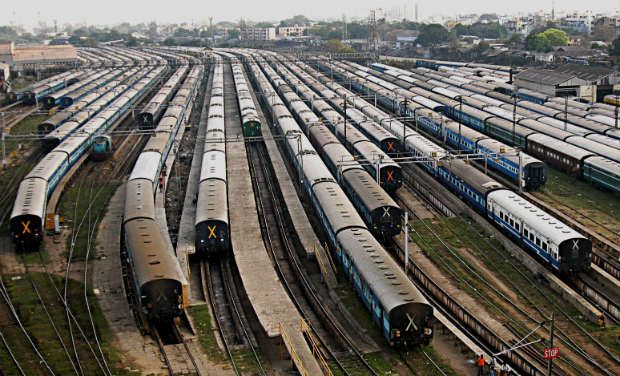The Supreme Court on Wednesday showed the green flag to a litigation-marred railway line from Sevoke in West Bengal to Rangpo in Sikkim, a project hanging fire since 2009 as wildlife activists and environmentalists are opposed to it.
The Sivok-Rangpo New Rail Line Project is a mere 44.98 km with only 7.6% of the tracks falling in the Himalayan state bordering China but its importance is immense from the strategic point of view and as a possible apparatus to accelerate socio-economic development of the people.
A top court bench headed by Chief Justice TS Thakur cleared the decks by permitting Northeast Frontier Railway’s plea to allow changing the status of more than 8.84 hectares of forest land in Mahananda wildlife sanctuary so that the project can be continued. It also directed the West Begal government to denotify the area within two months.
“The rail line will serve as a reliable mode of transportation and meet national defence requirements as well,” chief minister Pawan Chamling said.
The court instructed the railways to strictly adhere to environmental safeguards fixed by the national wildlife board, which approved the project in June 2015 but ringed it with tough guidelines.
To avoid loss of forests, 14 tunnels have been planned — the longest being 5,116 metres. The total tunnel length is about 38.552 km, about 85.86% of the total route. This means that a train will run through tunnels or cross 22 bridges for most of its journey.
The wildlife board had cleared the project with guidelines that tunnels should be built only at daytime, trains should run at restricted speed and modern technology, such as wireless animal tracking system, should be adopted to avoid accidents.
The top court underlined how critical the railway line is for Sikkim, which currently depends solely on national highway 10, a switchback of steep, landslide-prone rocky slopes that remains closed for days during monsoon.
The railways told the court how the state struggles for supplies during the rainy season.
An ambitious as well as prestigious project, with a budget of Rs 1,339.48 crore, it ran into trouble because the tracks will pass through Mahananda sanctuary and forest divisions of Kurseong, Darjeeling, Kalimpong and East Sikkim which are known for their rich wildlife diversity. Occasionally, wild elephants and other protected animals are mowed down by trains along another broad gauge line inside the sanctuary.
In the yet-to-be tabled second leg, the railway line is likely to reach Nathu La on the India-Tibet border.
(With inputs from Pramod Giri in Siliguri)
Source hindustantimes
The Sivok-Rangpo New Rail Line Project is a mere 44.98 km with only 7.6% of the tracks falling in the Himalayan state bordering China but its importance is immense from the strategic point of view and as a possible apparatus to accelerate socio-economic development of the people.
A top court bench headed by Chief Justice TS Thakur cleared the decks by permitting Northeast Frontier Railway’s plea to allow changing the status of more than 8.84 hectares of forest land in Mahananda wildlife sanctuary so that the project can be continued. It also directed the West Begal government to denotify the area within two months.
 |
| Indian Railways - a file photo |
The court instructed the railways to strictly adhere to environmental safeguards fixed by the national wildlife board, which approved the project in June 2015 but ringed it with tough guidelines.
To avoid loss of forests, 14 tunnels have been planned — the longest being 5,116 metres. The total tunnel length is about 38.552 km, about 85.86% of the total route. This means that a train will run through tunnels or cross 22 bridges for most of its journey.
The wildlife board had cleared the project with guidelines that tunnels should be built only at daytime, trains should run at restricted speed and modern technology, such as wireless animal tracking system, should be adopted to avoid accidents.
The top court underlined how critical the railway line is for Sikkim, which currently depends solely on national highway 10, a switchback of steep, landslide-prone rocky slopes that remains closed for days during monsoon.
The railways told the court how the state struggles for supplies during the rainy season.
An ambitious as well as prestigious project, with a budget of Rs 1,339.48 crore, it ran into trouble because the tracks will pass through Mahananda sanctuary and forest divisions of Kurseong, Darjeeling, Kalimpong and East Sikkim which are known for their rich wildlife diversity. Occasionally, wild elephants and other protected animals are mowed down by trains along another broad gauge line inside the sanctuary.
In the yet-to-be tabled second leg, the railway line is likely to reach Nathu La on the India-Tibet border.
(With inputs from Pramod Giri in Siliguri)
Source hindustantimes

.jpg)




Post a Comment